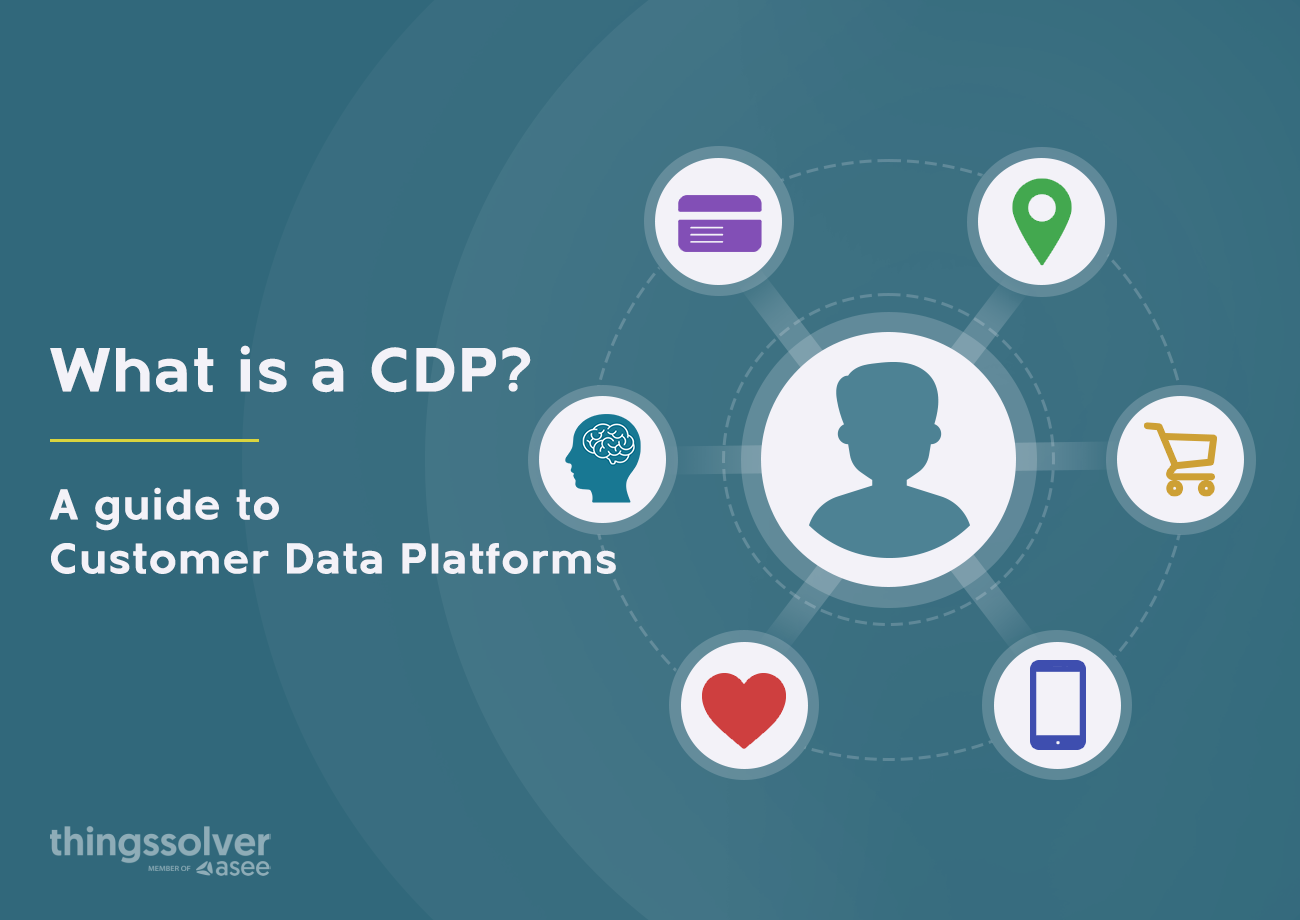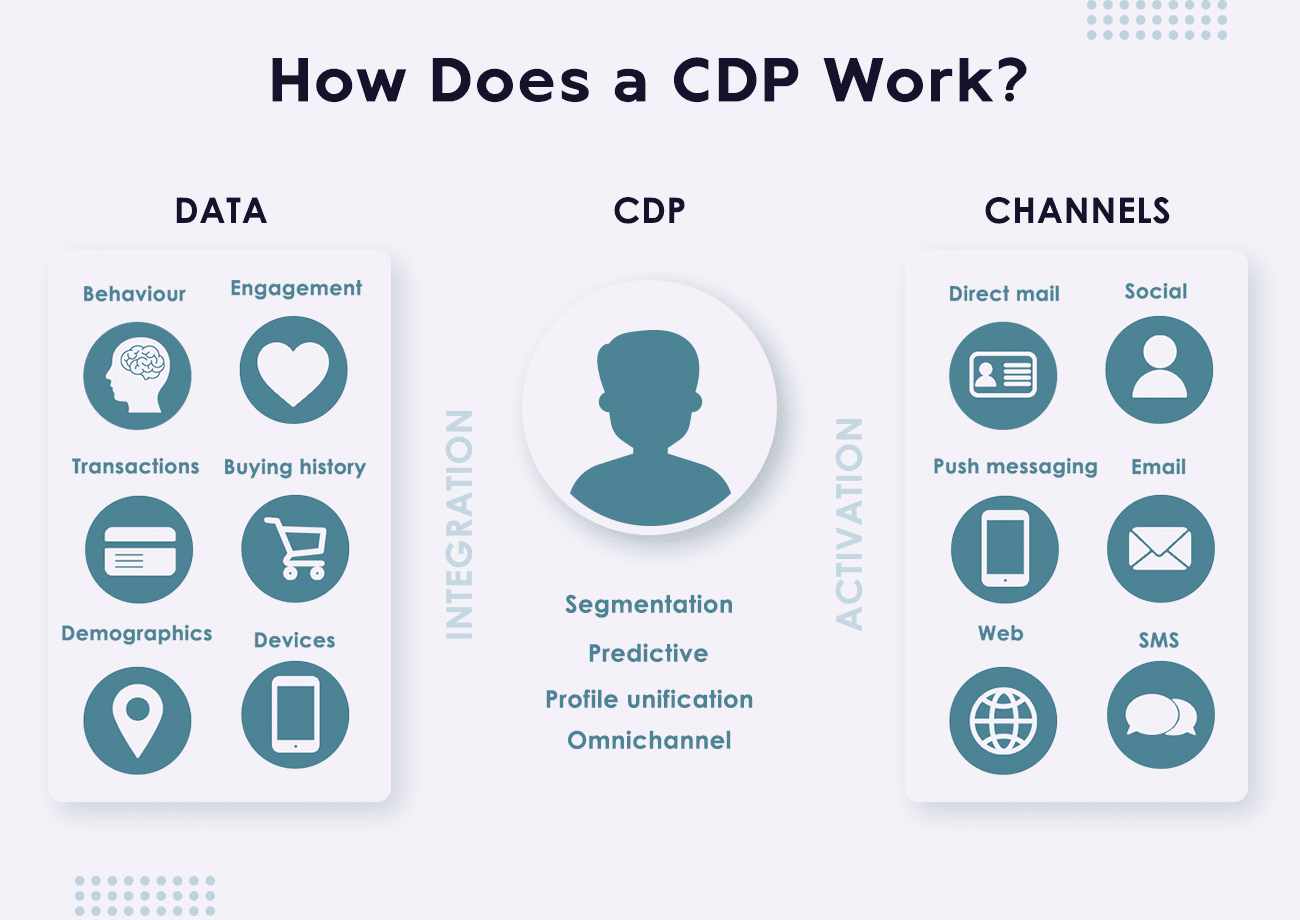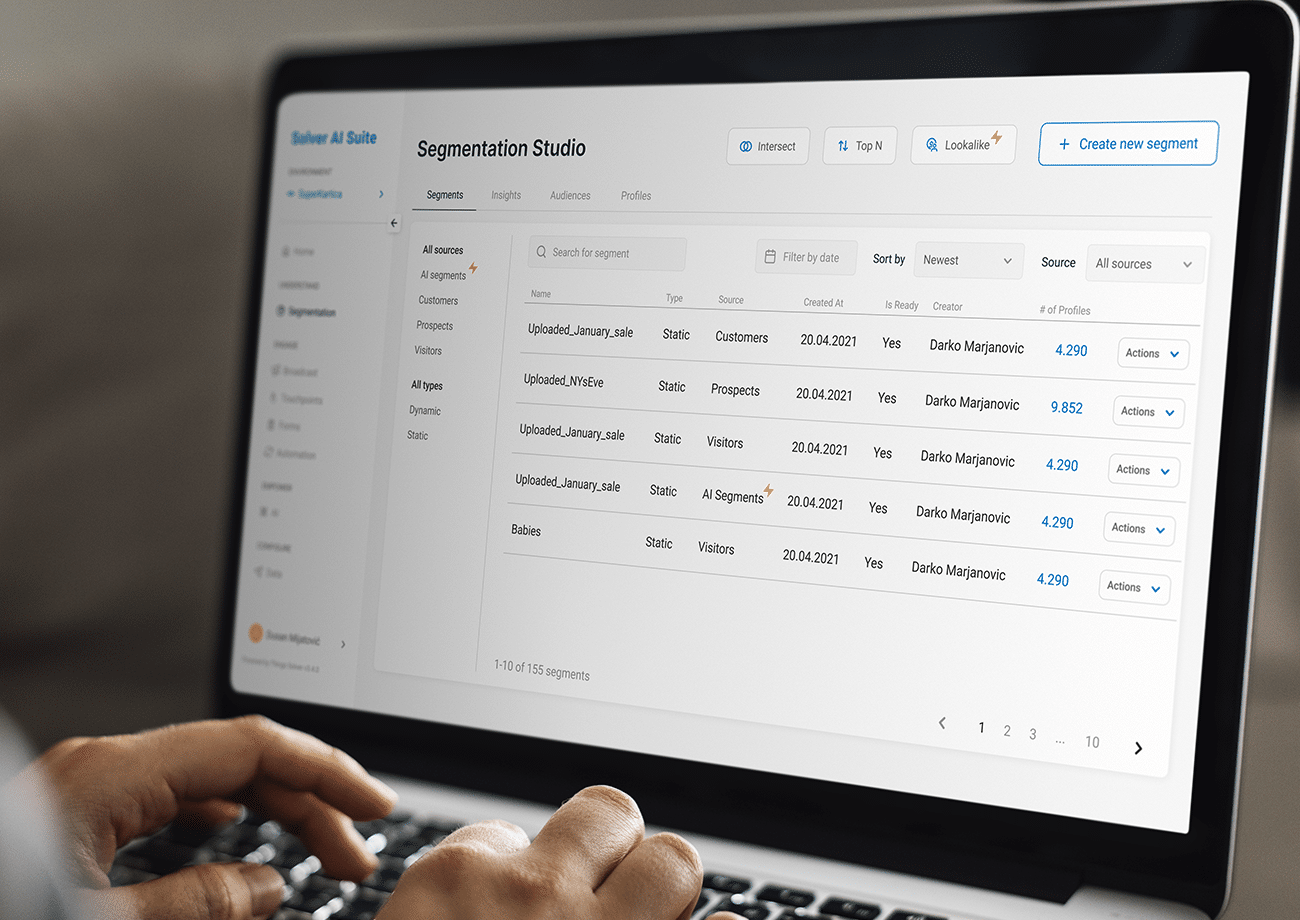How to boost online sales this holiday season with a personalized shopping experience
The holiday season is the most crucial period for retailers. Besides high sales volume, it is also an opportunity to…
Read more09. 10. 2023.

Customer Data Platforms (CDPs) have emerged as a pivotal technology in modern marketing and customer engagement.
These platforms are designed to collect, unify, and analyze customer data from various sources to create a centralized and comprehensive view of individual customers.
Just to paint a brighter picture of the importance of customer data platforms, let’s take a look at some stats.
According to Statista, the CDP industry revenue was estimated at 2 billion U.S. dollars in 2022, which is a 25% increase from a value of 1.6 billion reported in 2021.
Join us as we define CDPs and explain their key components. We’ll also take a look at the challenges and benefits of their implementation and compare them to other data management solutions.
Finally, we’ll try to help you choose the right CDP for your business.
A customer data platform (CDP) is a specialized software solution designed to collect, unify, and manage customer data from various sources to create a comprehensive and single customer view.
Its fundamental purpose is to enable businesses to better understand and engage with their customers by providing a unified and up-to-date profile of each individual customer.
Read on to learn how CDPs work and what their key components are.

A customer data platform consists of the next key components:
Let’s explore each component a bit further.
Data collection is the foundational component of a CDP. CDPs collect data from a wide range of sources, including but not limited to:
CDPs use connectors, APIs, and data ingestion mechanisms to collect and import data from these diverse touchpoints.
Once data is collected, customer data platforms perform data normalization and enrichment. This process involves standardizing and organizing data from different sources to ensure consistency and accuracy.
To do this, CDPs use data integration and data cleaning techniques – they match, deduplicate, and standardize them to create a consistent and coherent customer profile.
Enrichment may involve adding missing information, such as demographics or geolocation data, to create more comprehensive customer profiles.
Ultimately, all data is stored in a central repository that allows for easy querying and retrieval of customer information. Data is typically updated in real-time or near-real-time to ensure that you have access to the most current customer data.
CDPs provide an amazing infrastructure and tools for storing, organizing, and analyzing customer data. This includes data warehousing capabilities to handle large volumes of data.
The analytics and reporting feature allows you to gain insights from the data, track customer behavior, and improve the effectiveness of marketing campaigns.
When customer data platforms retrieve new data, they create customer profiles, audiences, and segments based on various criteria. These criteria can include demographics, purchase history, website interactions, and more.
The three categories differ:
To tackle this part, we’ve worked hard to develop Solver Segmentation Studio, an AI- and ML-powered Segmentation Studio that helps you simplify the complexity of your marketing campaigns.
How does Things Solver’s Segmentation Studio work?

Machine learning automates the process of tailoring marketing efforts to specific customer segments and dynamically adjusting variables.
These algorithms experiment with various combinations of variables for each distinct customer segment. The success of each variation can be assessed based on customer behavior, allowing for real-time adjustments to landing pages, emails, or ads to better cater to the next user.
One of the primary goals of a CDP is to create a single customer view where each customer is associated with a unique and comprehensive profile that combines all available data.
With a single customer view, you can gain insights into customer behavior, preferences, and history.
This is particularly useful for digital marketers. They can analyze the SCVs in their customer data platform to learn how shoppers interact with your brand across different channels and deliver highly personalized and targeted marketing efforts.
The final step in this process, audience activation, translates to using the insights gained from the CDP to execute and improve targeted marketing campaigns across various channels.
For example, most marketers will use this feature to:
Overall, a CDP can help you decide what messages to send to which customers and when to send them. A CDP is your helper in talking to customers in a way that makes sense for each person.
Considering their vast use, it’s expected that businesses run into some difficulties when trying to implement a Customer Data Platform. Let’s briefly go over the top five challenges associated with using a CDP:
Firstly, integrating data from various sources into a CDP can be complex. For example, different data formats, structures, and quality levels may require extensive data mapping and transformation efforts.
Maintaining data quality and consistency is often a challenge, as data from different sources may contain errors, duplicates, or inconsistencies.
Data privacy regulations like GDPR and CCPA impose strict requirements on how customer data is collected, used, and stored. Ensuring compliance with these regulations can be quite a challenge and violations can result in severe penalties.
As the volume of customer data grows, scalability becomes a concern. Ensuring that the CDP can handle increasing data loads while maintaining performance can be tricky without proper planning.
Different departments may have diverse priorities and objectives when it comes to using the CDP, which can lead to difficulties in implementing a unified data strategy.
Completely disregarding these challenges can be a mistake with long-term effects on your business.
However, successfully overcoming these challenges can lead to effectively using a CDP’s capabilities and realizing its benefits for personalized marketing and customer engagement.
Luckily, the benefits of implementing a customer data platform outweigh its challenges.
Thanks to CDPs, businesses can treat each customer as an individual rather than as a set of disconnected data points. This makes everything else easier – you can tailor your marketing campaigns, communications, and customer experiences to each customer’s unique preferences and needs.
In addition to gaining competitive advantage and making data-driven decisions, implementing a CDP allows you to enjoy a wide range of advantages that contribute to improved customer engagement, enhanced marketing effectiveness, and overall business success.
Let’s discuss some of them.
A CDP helps you gain deeper insights into customer behavior by consolidating data from multiple touchpoints. It provides a unified view of customer interactions, such as website visits, mobile app usage, email engagement, and purchase history.
Thanks to this, you can analyze patterns and trends in customer behavior. For example, you can:
By understanding how your customers behave and what they prefer, you can refine marketing strategies and tailor your products or services according to their needs.
CDPs offer automation capabilities that can streamline your marketing and operational processes. This automation saves both time and money by reducing manual efforts and minimizing errors.
Marketing automation within a customer data platform can include tasks like:
This is exactly what Solver’s segmentation feature can do for you. Just imagine how automating routine tasks can allow you to allocate resources more efficiently, improve campaign scalability, and free up staff to focus on strategic initiatives.
Thanks to a unified customer view and access to historical data, CDPs enable you to predict your customer’s needs more accurately. Just like we already mentioned, machine learning and predictive analytics capabilities often integrate with CDPs to forecast future customer behaviors.
For instance, you can predict which products a customer might be interested in, when they might make a purchase, or whether they are at risk of churning.
This foresight empowers you to proactively engage with your customers, offer personalized recommendations, and prevent issues before they arise, ultimately improving customer satisfaction and retention.
CDPs provide robust tools for tracking and measuring performance metrics across marketing campaigns and customer interactions.
Some of the most common key performance indicators (KPIs) to monitor include:
By continuously tracking these metrics, businesses can optimize their strategies, allocate resources effectively, and focus on activities that drive the highest CLV. They can also experiment with different approaches and adjust their campaigns based on real-time performance data.
Implementing a customer data platform encourages a customer-centric culture within an organization. It fosters a mindset where customers’ needs and preferences are at the forefront of your decision-making.
Teams across the organization, from marketing and sales to product development and customer support, can align their efforts to provide a seamless and customer-focused experience.
Considering that there are different data management platforms, CDPs being one of them, let’s see how they differ.
Sometimes, you might get confused over the differences between a CDP and other data management solutions such as:
While they all manage customer data in some capacity, they serve different purposes and have distinct focuses.
CDP is focused on customer data unification for personalized marketing while DMP focuses on managing and optimizing advertising and audience data for digital advertising and media campaigns.
CDP focuses on customer data consolidation for personalized engagement while CRM is focused on nurturing customer relationships, handling sales, and providing support.
In this case, CDP is focused on customer data integration for marketing insights whereas Data Warehouse is designed to store and manage large volumes of structured data from various sources for reporting and analysis.
While a customer data platform focuses on customer data consolidation for tailored experiences, a Data Lake can store diverse data types for flexible analytics.
While there may be some overlap in functionality between these platforms, their core purposes differ, making each platform suitable for specific business needs and goals.
Customer data platforms, in particular, excel in delivering data-driven marketing strategies by unifying customer data and enabling personalized customer experiences.
Although the two most common customer data platform use cases are targeted advertising and personalized customer experiences, the story doesn’t end here.
Customer data platforms can be applied in a wide range of situations and address different customer data use cases. Let’s list some of them:
While these aren’t all customer data platform use cases, they are a good reflection of what CDPs can do for your business.
But do you know how to choose the right one? Let us help you with that, too!
Selecting the most suitable Customer Data Platform for your business requires a thoughtful and strategic approach. Here are 5 key steps to help guide your decision-making process:
Step #1: Define your goals and objective
Before anything else, clearly outline what you aim to achieve with a customer data platform. Is your goal better customer segmentation or enhanced personalization? Or perhaps improved customer experiences? Knowing this will speed up the process.
Step #2: Assess your data needs
Once you establish goals, take some time to understand your data sources, types, and volumes. You want to ensure the CDP you choose is capable of effectively handling your data requirements.
Step #3: Research and compare different CDP solutions
This step requires you to explore the customer data platform market and look for a solution that aligns with your goals and data needs. At this point, you should consider factors such as:
Step #4: Request demos and customer references
To start narrowing down your choices, book a demo from the top customer data platform providers. Don’t forget to ask for customer references to gain insights into their experiences.
Step #5: Consider future growth and flexibility
The CDP you choose should match the majority of your criteria, align with your long-term goals, accommodate your business’s future needs, and adapt to changing data privacy regulations and customer expectations. This can be a complex process, so don’t rush it.
Take into consideration the steps outlined here and make sure that the customer data platform you choose really fits the needs and goals of your business.
Customer Data Platforms have become indispensable tools in executing exceptional digital marketing strategies and engaging customers.
They truly are great at helping you connect with your audience on a more personalized level and provide them with better solutions or products.
If you’re looking to elevate your customer data strategies, look no further than Solver’s Segmentation Studio. Reach out to us at ai@thingsolver.com or book a demo to explore how Solver’s Segmentation Studio can boost your marketing efforts today!
The holiday season is the most crucial period for retailers. Besides high sales volume, it is also an opportunity to…
Read moreA closer look at analytics that matter You’ve trained your AI agent. It runs. It talks. It reacts. But does…
Read moreImagine having a team of top chefs, but your fridge is packed with spoiled ingredients. No matter how talented they…
Read more